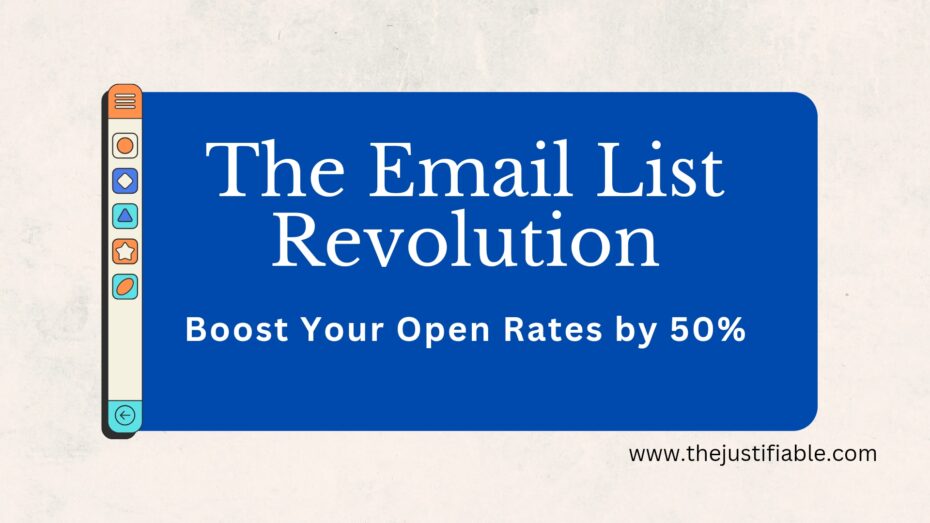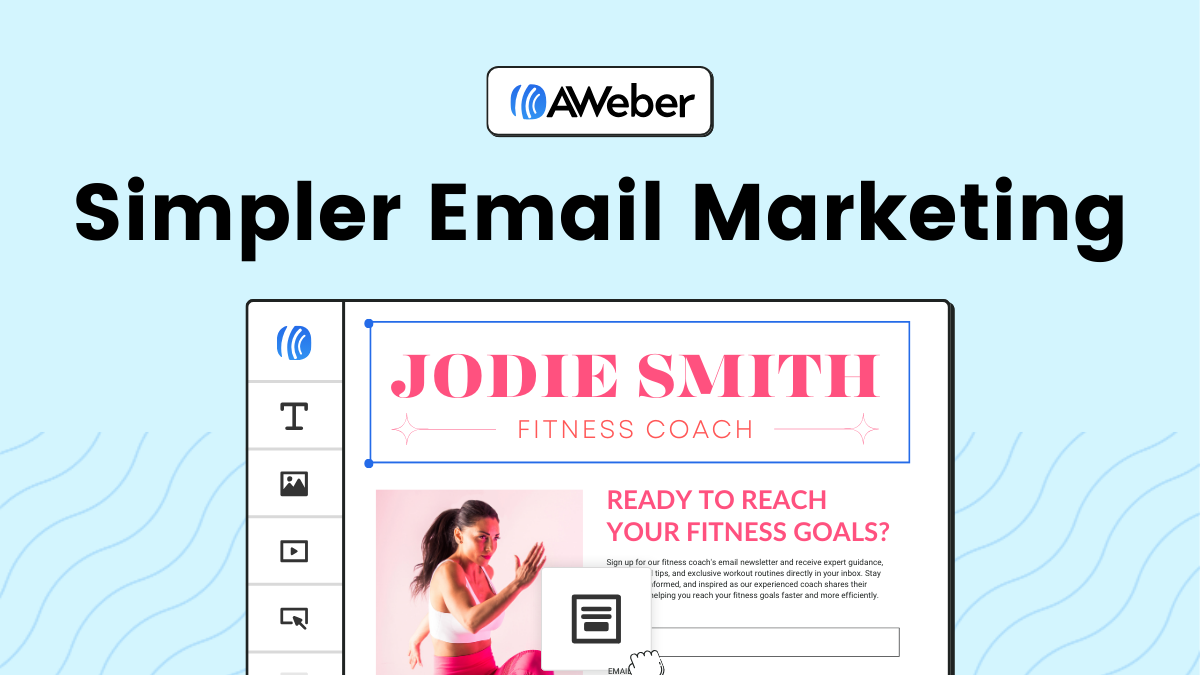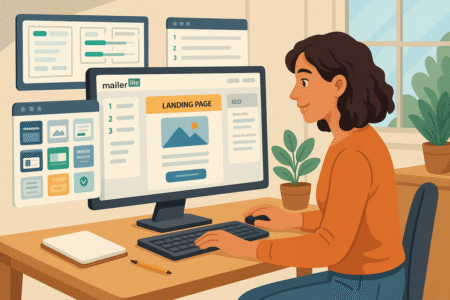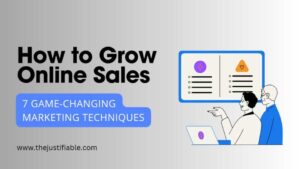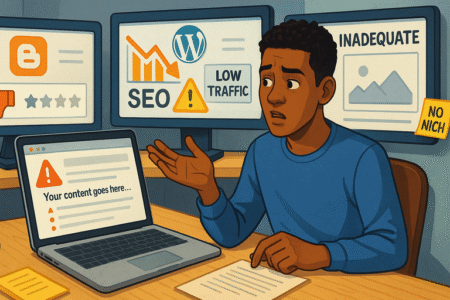Table of Contents
Email list optimization is at the forefront of digital marketing innovation, promising to revolutionize the way businesses engage with their audience. In today’s digital age, the power of a revitalized email list strategy cannot be overstated. It’s not just about collecting email addresses; it’s about cultivating an engaged community that looks forward to your messages.
By refining your approach to email list management, you can significantly enhance your open rates, foster stronger relationships with your subscribers, and ultimately drive higher conversion rates. This journey begins with understanding the essence of your audience’s needs and interests, allowing you to deliver content that resonates deeply and prompts action.
As we unveil the power behind an optimized email list strategy, we delve into proven methods that not only clean and segment your list for better targeting but also employ innovative techniques to keep your audience engaged and eager for more.
Embrace this transformative approach to unlock the full potential of your email marketing efforts, setting a new standard for success in your digital communication strategy.
5 Essential Steps to Purify Your Email List for Higher Engagement
It’s true, managing your email list might not always be at the top of your exciting tasks list. However, the undeniable impact it has on engagement rates cannot be ignored. A purified email list ensures that your content reaches those genuinely interested, making every send count. Here’s how to enhance your email list management for improved engagement.
- Firstly, regular clean-up is crucial. Remove inactive subscribers who haven’t engaged with your emails over a significant period. This might seem counterintuitive, but quality indeed trumps quantity when it comes to your email list.
- Secondly, implement a double opt-in process. This ensures that those who subscribe are genuinely interested in your content, leading to a more engaged audience base.
- Thirdly, segment your list based on subscriber behavior and preferences. Tailoring your emails to fit different segments of your audience can dramatically increase relevance and, by extension, engagement.
- Fourth, keep your subscription forms straightforward yet inviting. Complicated forms can deter potential subscribers. A simple form that promises value is your best bet for growing an engaged list.
- Lastly, encourage feedback and actively engage with it. Understanding what your audience wants to see in their inbox is invaluable. Use this feedback to refine your email content, making it more appealing and relevant to your subscribers.
By following these steps, you’re not just cleaning up your list; you’re setting the stage for a more engaged, responsive audience.
The Magic Number: Achieving a 50% Increase in Open Rates
Boosting your email open rates by 50% may sound like a marketer’s dream, but it’s entirely achievable with the right strategies in place. The secret? Understanding and implementing practices that resonate with your audience, driving interest and action from the moment they see your email in their inbox.
Personalization is your golden ticket. Moving beyond the simple “Hi [Name]” and diving into personalized content based on past interactions can significantly increase your open rates. When subscribers feel that an email speaks directly to their needs and interests, they’re far more likely to engage.
Optimizing your subject lines plays a pivotal role. Your subject line is the first impression and deciding factor for many subscribers on whether to open an email. Crafting compelling, curiosity-driven, or benefit-focused subject lines can dramatically boost open rates.
Timing is everything. Sending emails when your subscribers are most active enhances the likelihood of them being opened. Analyzing your audience’s behavior to identify these peak times can lead to substantial improvements in open rates.
Consistently delivering value is non-negotiable. Your content must be engaging, informative, and valuable. Subscribers will look forward to your emails if they know each one enriches their day or offers solutions to their problems.
Engagement beyond the inbox is also crucial. Encourage subscribers to interact with your brand on other platforms, such as social media. This creates a more robust relationship, increasing their interest and engagement with your emails.
Segmentation Secrets: Skyrocket Your Email List Performance
Have you ever wondered why some emails resonate so well with you while others miss the mark? Or why certain brands seem to speak directly to your needs? The secret behind this personalized communication is segmentation. But how can you apply this to your email list to boost performance and engagement?
Segmentation is not just about dividing your email list into different groups; it’s about understanding the unique preferences, behaviors, and needs of your audience segments to deliver highly targeted content. When done right, segmentation can transform your email marketing strategy, leading to higher open rates, increased click-through rates, and more conversions.
The first step to successful segmentation is data collection. Every interaction a subscriber has with your emails provides valuable insights. From the moment they sign up, tracking their behavior across your emails and website can help you understand their interests and preferences. This data forms the foundation of your segmentation strategy, allowing you to group your audience based on shared characteristics or behaviors.
Once you have your segments defined, the next step is personalization. This goes beyond addressing subscribers by their name. It’s about tailoring the content, offers, and even the send time of your emails to match the specific needs and interests of each segment. For instance, new subscribers might receive a welcome series, while long-time fans could get exclusive loyalty offers.
Testing and optimization are critical components of a successful segmentation strategy. Regularly testing different aspects of your email campaigns, from subject lines to content formats, helps you understand what resonates best with each segment. This continuous cycle of testing, learning, and refining ensures that your email content stays relevant and engaging over time.
Segmenting Your Way to Success: A Data-Driven Approach
Are you ready to dive deep into the heart of your email list and uncover the segments that lie within? Understanding the diverse needs and interests of your audience is the first step toward creating highly targeted and successful email campaigns. But where do you start, and how can you ensure that your segmentation strategy is built on solid, data-driven foundations?
The journey begins with gathering and analyzing data. Every click, open, and interaction is a piece of the puzzle that, when put together, reveals the intricate picture of your audience’s preferences. This data-driven approach allows you to segment your email list not just by basic demographics but by behaviors and engagement levels.
Imagine knowing exactly who prefers discounts over new product information, or who engages more with your emails on weekends. This level of insight is what makes segmentation so powerful.
The key to successful segmentation is to always be fine-tuning. As your audience grows and evolves, so too should your segments. Regularly updating your segments with fresh data ensures that your emails remain relevant and engaging. By embracing a data-driven approach to segmentation, you’re not just sending emails; you’re delivering experiences that resonate with each unique subset of your audience.
Boost Engagement with Personalized Content for Each Segment
Once you’ve identified your segments, the next step is to craft personalized content that speaks directly to the interests and needs of each group. But how can you ensure that your content not only captures their attention but also drives engagement?
Personalized content goes beyond just using a subscriber’s name. It’s about creating content that feels like it was made just for them. For your newest subscribers, this might mean an introductory series that welcomes them to your brand and educates them on your values and product offerings. For your most engaged customers, consider exclusive offers or behind-the-scenes content that rewards their loyalty.
Engagement thrives on relevance. When each email feels like a personal message rather than a broad broadcast, subscribers are more likely to open, read, and take action. This is where the magic of personalized content for each segment truly shines. It’s not just about selling; it’s about building a relationship with your audience by consistently delivering value that’s tailored to their specific interests.
Innovative Techniques to Enrich Your Email List
Navigating the world of email marketing is akin to gardening; just as a gardener nurtures their plants with sunlight, water, and care, so must you tend to your email list with innovation, engagement, and strategic insight. To see your email list flourish, introducing innovative techniques is paramount. These methods not only attract new subscribers but also re-engage the old, turning your email list into a vibrant and thriving community.
Unlocking the Potential of Interactive Emails
Imagine transforming your emails from static messages into dynamic experiences, much like turning a monochrome painting into a vivid, interactive art piece. This is the power of interactive emails. By incorporating elements such as polls, surveys, interactive images, and even games, you provide your subscribers with a reason to engage actively with your content.
This not only boosts your open rates but also significantly enhances the user experience, making your emails a highlight in their inbox.
Interactive content does more than entertain; it invites participation, which in turn, offers invaluable insights into your subscribers’ preferences and behaviors. Tailoring your future communications based on these insights ensures your messages remain relevant and engaging, fostering a deeper connection with your audience.
The goal is to create emails that your subscribers look forward to receiving, and interactive elements are the key to achieving this.
Leveraging Analytics to Continuously Optimize Your Email List
In the quest to enrich your email list, analytics is your compass. Just as a captain navigates the seas with precision and care, you must use analytics to steer your email marketing strategy towards success. By diving deep into data on open rates, click-through rates, and conversion metrics, you gain a clear understanding of what resonates with your audience—and what doesn’t.
This ongoing process of analysis and optimization is crucial for keeping your email list vibrant and productive. Identifying trends and patterns allows you to adjust your content, design, and segmentation strategies, ensuring that your communications are always aligned with your subscribers’ evolving interests. Remember, an email list is a dynamic entity; it grows and changes over time. By leveraging analytics, you ensure that your strategy adapts alongside it, maintaining the relevance and efficacy of your email campaigns.
Embracing AI and Machine Learning for Personalization at Scale
In the vast garden of your email list, each subscriber is a unique flower, requiring personalized attention to truly blossom. Artificial Intelligence (AI) and Machine Learning (ML) are the modern gardener’s tools, enabling you to scale your personalization efforts like never before.
These technologies analyze countless data points in real-time, predicting subscriber behavior and preferences with astonishing accuracy. By leveraging AI and ML, you can automate personalized email content, ensuring that each message is tailored to the individual’s current interests and needs. This level of personalization enriches the subscriber experience, making each email feel like it was hand-crafted just for them.
Utilizing User-Generated Content to Foster Community and Trust
Imagine your email list as a communal garden, where each subscriber contributes to its beauty and diversity. User-generated content (UGC) is a way to showcase these contributions, building a sense of community and trust among your audience.
Featuring stories, reviews, and photos from your subscribers in your emails not only enriches your content but also validates your audience’s voice, making them feel valued and part of something larger. This approach not only enhances engagement but also leverages social proof, encouraging more people to join and participate in your email list community.
Incorporating Video Content for Dynamic Engagement
Just as a vibrant, blooming flower catches the eye in a garden, so does video content in an email. In an inbox filled with text-based emails, a video is a breath of fresh air, offering a dynamic and engaging way to connect with your subscribers.
Whether it’s a behind-the-scenes look at your company, a product demonstration, or a heartfelt message from your team, videos can convey your message in a more compelling and relatable way. By embedding video content in your emails, you not only enrich the subscriber experience but also significantly increase the likelihood of your message being seen and remembered.
The Role of Automation in Transforming Your Email List
“Email has an ability many channels don’t: creating valuable, personal touches—at scale.” This insight encapsulates the transformative power of automation in email marketing. In a digital age where personalization and efficiency are paramount, automation stands out as a critical tool for nurturing and growing your email list. It’s about sending the right message, to the right person, at the right time, without the need for constant manual intervention.
Automation does more than just save time; it enhances the subscriber experience, ensuring that each interaction with your brand is timely, relevant, and personalized. From welcome sequences that greet new subscribers to re-engagement campaigns that reignite interest among dormant users, automation allows you to create a series of touchpoints that guide subscribers along their journey with your brand. It’s like having a garden that waters itself, ensuring every plant gets exactly what it needs to thrive.
The beauty of automation lies in its ability to analyze and act on data in real time. This means you can segment your email list based on subscriber behavior and preferences, delivering content that resonates with each segment’s unique interests. Whether it’s a product recommendation based on past purchases or a birthday discount, automated emails can make each subscriber feel seen and valued.
3 Automation Strategies That Promise to Double Your Open Rates
Doubling your open rates might seem like a lofty goal, but with these three automation strategies, it’s entirely within reach. First, trigger-based emails can significantly increase engagement by sending messages that are directly relevant to the subscriber’s actions, such as browsing a particular product or abandoning a cart. These emails show that you’re paying attention, encouraging subscribers to revisit their decision.
Second, automated A/B testing allows you to refine your email strategy continually. By testing different subject lines, call to actions (CTAs), and content formats, you can discover what resonates best with your audience and adjust your approach accordingly. This iterative process ensures that your emails are always optimized for maximum impact.
Lastly, time optimization is a game-changer. By analyzing when each subscriber is most likely to engage with your emails, automation can schedule sends at these optimal times. This personalized approach to timing can dramatically increase your open rates, as your emails arrive when subscribers are most receptive.
Personalization at Scale: How Automation Makes it Possible
In the realm of email marketing, personalization is the key to unlocking deeper engagement and loyalty. But how can you achieve personalization at scale, where every subscriber feels like you’re speaking directly to them? Automation is the answer. It enables you to leverage data from subscriber interactions, preferences, and behaviors to create highly personalized email experiences.
Automation tools can segment your email list into detailed groups, allowing you to tailor your messaging to match the specific interests and needs of each segment. Whether it’s customizing content based on past purchases, location, or engagement patterns, automation ensures that your emails are relevant and compelling to each subscriber.
Moreover, automation facilitates dynamic content insertion, where elements of your emails change based on the recipient’s data. This means a single email template can display different products, messages, or offers, depending on who’s viewing it. Such personalized touches enhance the subscriber’s experience, making them feel valued and understood on an individual level.
Measuring Success: Key Metrics to Track Your Email List’s Performance
Did you know that, on average, email marketing has a return on investment (ROI) of $42 for every $1 spent? This staggering statistic underscores the importance of not just running email campaigns but also measuring their success meticulously.
To truly understand the performance of your email list and optimize your strategies for maximum impact, it’s crucial to track the right metrics. Knowing which aspects of your email list are thriving and which need tweaking can transform your email marketing efforts from good to great.
Engagement metrics like open rates and click-through rates (CTRs) are just the tip of the iceberg. To gain a comprehensive understanding of your email list’s performance, you must dive deeper. Look at conversion rates to see how effectively your emails are driving subscribers to take desired actions.
Monitor the growth rate of your list to ensure it’s expanding healthily. Pay attention to bounce rates and unsubscribe rates to identify potential issues with list quality or content relevance. Each of these metrics offers valuable insights into different facets of your email marketing strategy, enabling you to make data-driven decisions that propel your success.
Beyond Open Rates: Comprehensive Metrics for a Holistic View
While open rates provide a snapshot of your email campaign’s initial appeal, they don’t tell the whole story. To truly measure the success of your email list, you need to consider a range of comprehensive metrics that offer a holistic view of your efforts. Engagement goes beyond just opening an email; it’s about what subscribers do once they’ve opened it.
Click-through rates (CTRs) are crucial for understanding how compelling your email content is and whether it’s driving subscribers to take action. Conversion rates go a step further, showing not just interaction but actual results, such as purchases or sign-ups. Don’t overlook list churn rate, which includes unsubscribes and spam complaints, as it reveals how well you’re maintaining your audience’s interest over time.
Equally important is analyzing the email forwarding rate or share rate, which can indicate the virality and shareability of your content. This metric can help you identify emails that struck a chord with your audience, prompting them to spread the word to others.
By tracking these and other comprehensive metrics, you gain a clearer, more detailed picture of your email list’s performance, allowing you to refine your strategy and achieve even greater success.
The Impact of A/B Testing on Your Email Strategy’s Success
A/B testing, also known as split testing, is a marketer’s secret weapon for fine-tuning email strategies. By comparing two versions of an email to see which one performs better, you can make evidence-based decisions that significantly enhance your email list’s performance. The impact of A/B testing on your strategy’s success cannot be overstated; it’s like having a roadmap that guides you to more engaging and effective emails.
Test everything from subject lines to email content, call-to-action (CTA) buttons, and sending times. Even small changes can lead to significant improvements in open rates, click-through rates, and conversions. For instance, discovering the perfect subject line can drastically increase your open rates, while the right CTA can boost conversions.
A/B testing also allows you to understand your audience better. By seeing which email elements resonate most with your subscribers, you gain insights into their preferences and behaviors. This knowledge is invaluable for personalizing future campaigns and enhancing subscriber engagement.
Future-Proofing Your Email List: Trends to Watch in 2024
Are you prepared for the future of email marketing? As we move into 2024, several emerging trends promise to reshape how we manage and optimize email lists. Staying ahead of these trends is not just about keeping up; it’s about setting the pace, ensuring your email marketing strategy remains effective, engaging, and ahead of the curve. Let’s dive into what’s on the horizon and how you can prepare your email list for the future.
The digital landscape is constantly evolving, and with it, subscriber expectations. Personalization, automation, and interactivity have moved from being nice-to-have features to must-haves in any email marketing campaign. But as technology advances, so do the opportunities to innovate within your email list strategies. Artificial Intelligence (AI), machine learning, and predictive analytics are no longer buzzwords but essential tools in crafting personalized, dynamic email campaigns that resonate with subscribers on an individual level.
Embracing AI: The Next Frontier for Email List Optimization
Artificial Intelligence (AI) is set to revolutionize email marketing by making list optimization smarter, faster, and more efficient. But what does embracing AI really mean for your email list? It means leveraging machine learning algorithms to analyze subscriber behavior and engagement patterns, predicting which content will perform best with different segments of your audience.
AI can automate and personalize email campaigns at a scale previously unimaginable, ensuring that every subscriber receives content that feels tailor-made for them.
AI-driven tools can also help identify the most opportune moments to send emails, optimizing for when your subscribers are most likely to engage. Beyond timing and content, AI can enhance subject line generation, ensuring that your emails stand out in crowded inboxes.
By embracing AI in your email list optimization efforts, you’re not just future-proofing your strategy; you’re elevating the subscriber experience, fostering deeper engagement, and driving superior results.
Predictive Personalization: Tailoring Content Before They Even Ask
Predictive personalization takes email marketing to new heights by anticipating subscriber needs and interests before they even articulate them. This forward-thinking approach relies on advanced data analytics and AI to analyze past behaviors, preferences, and engagement trends, predicting future interests and actions. But how can you incorporate predictive personalization into your email strategy?
The key lies in harnessing the power of data to create dynamic subscriber profiles that update in real-time. By understanding each subscriber’s journey, you can predict what type of content they’re most likely to engage with next.
Whether it’s suggesting products based on past purchases, offering content that aligns with their engagement history, or timing your emails to coincide with when they’re most active, predictive personalization ensures that your emails always hit the mark.
Frequently Asked Questions (FAQ)
How can I increase my email open rates?
To increase email open rates, focus on crafting compelling subject lines, personalizing content based on subscriber behavior, optimizing send times, and consistently delivering valuable content. Engaging subject lines and relevant content tailored to subscriber interests are key to improving open rates.
What are the best practices for managing an email list?
Best practices for managing an email list include regularly cleaning your list by removing inactive subscribers, segmenting based on subscriber behavior and preferences, using a double opt-in process to ensure quality subscribers, and maintaining up-to-date and engaging content.
Why is email list segmentation important?
Email list segmentation is important because it allows you to tailor your messages to specific groups of subscribers based on their interests, behaviors, or demographics. This targeted approach increases relevance, improves engagement rates, and enhances overall email marketing effectiveness.
What are some effective ways to personalize email content?
Effective ways to personalize email content include using the subscriber’s name, segmenting based on behavior, sending personalized product recommendations, crafting tailored content based on past interactions, and employing dynamic content blocks that adjust based on subscriber data.
How does automation improve email marketing?
Automation improves email marketing by streamlining the process of sending targeted and personalized emails at scale. It enables timely responses based on subscriber actions, such as welcome emails or cart abandonment reminders, which enhances engagement and increases conversion rates.
What is the role of analytics in email marketing?
Analytics plays a crucial role in email marketing by providing insights into how subscribers interact with your emails. By analyzing metrics like open rates, click-through rates, and conversions, you can measure the effectiveness of your campaigns and make data-driven decisions to optimize future emails.
How often shYou should clean your email list?
You should clean your email list regularly, ideally every 3-6 months. This involves removing inactive subscribers who haven’t engaged with your emails for a certain period and confirming the accuracy of subscriber information to maintain a healthy and responsive list.
What is a double opt-in process, and why should I use it?
A double opt-in process requires subscribers to confirm their email address by clicking a link sent to them after they sign up. This ensures that the subscriber is genuinely interested and helps reduce the likelihood of fake or incorrect email addresses, leading to higher engagement rates.
How can I use segmentation to improve my email marketing?
Segmentation can improve email marketing by allowing you to send more relevant content to different groups of subscribers. By segmenting based on factors such as purchase history, engagement level, or geographic location, you can create targeted campaigns that better meet the needs of each group, resulting in higher engagement and conversions.
What are some innovative techniques for email list growth?
Innovative techniques for email list growth include offering exclusive content or discounts in exchange for sign-ups, using interactive elements like quizzes or polls to engage visitors, incorporating social media sign-ups, and leveraging partnerships or collaborations to reach new audiences.
Why should I use interactive elements in my emails?
Interactive elements in emails, such as polls, surveys, or interactive images, encourage subscriber engagement and make emails more engaging. These elements not only capture attention but also provide valuable insights into subscriber preferences, allowing for more targeted future communications.
How can I optimize my email subject lines for better open rates?
To optimize email subject lines for better open rates, keep them short and to the point, use action-oriented language, create a sense of urgency, personalize with the subscriber’s name or relevant details, and test different variations to see which resonates best with your audience.
What metrics should I track to measure the success of my email campaigns?
Key metrics to track for measuring the success of email campaigns include open rates, click-through rates (CTR), conversion rates, bounce rates, unsubscribe rates, and overall engagement. These metrics provide insights into how well your emails are performing and where there may be room for improvement.
How can I use AI to enhance my email marketing strategy?
AI can enhance your email marketing strategy by analyzing subscriber data to predict behavior, segmenting audiences more effectively, personalizing content at scale, optimizing send times, and improving subject line creation. AI-driven insights help tailor your emails more closely to subscriber preferences, increasing engagement.
What are the benefits of using user-generated content in emails?
Using user-generated content in emails, such as customer reviews or testimonials, can build trust and foster a sense of community among subscribers. It provides social proof, which can be more persuasive than traditional marketing, and helps increase engagement by featuring real experiences from real customers.


